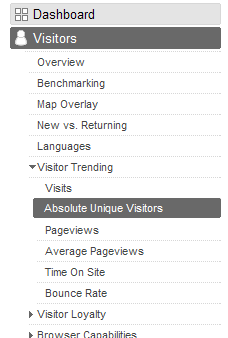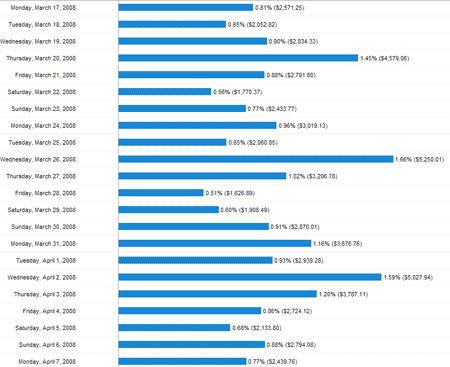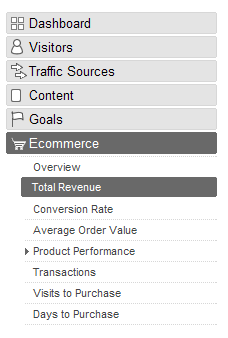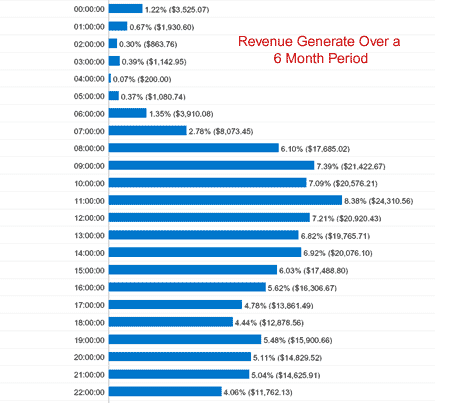It’s been a busy few weeks of continued testing and experimenting to discover some of the most reliable methods ecommerce store owners can use to increase sales. I’m back and ready to show more of what I’ve uncovered.
Retaining Current Customers
Building an online business involves many elements, one of which is a solid customer retention strategy. Keeping your current customers coming back for more while adding new customers is one key element that will help build a healthy and sustainable shop.
It order to retain current customers, you need to stay in contact with them. But when is the best time to contact them in order to gain maximum response?
Much of this is determined by the market you are targeting. For example, if you are selling a product that is targeted more toward stay at home mothers, you may find that your emails are more effective when sent during the evening hours (after the kids are in bed and they have time to themselves.) As another example, if you are offering a product that is targeted toward business owners, it may be best to send these follow-ups during normal business hours (knowing this is when they are more likely to be in front of their computers.)
The two examples above are for illustration only and are not intended to be taken as “tested fact”. They are to get you thinking about your target audience and how understanding their lifestyle can determine when they are likely to be listening.
Finding the exact time period, as in the day of the week and hour(s) that are most effective, can involve some clever thinking but fortunately there are some objective reporting methods you can use to get you real close on your very first attempt.
Google Analytics to the Rescue
One way to zero in on the day(s) and times you should be testing is to turn to Google Analytics reporting.
 You will be able to get an good estimate of the number of unique visitors that are coming to your site on any given day by going to the Absolute Unique Visitors report. The image to the left shows where in your navigation that report is found.
You will be able to get an good estimate of the number of unique visitors that are coming to your site on any given day by going to the Absolute Unique Visitors report. The image to the left shows where in your navigation that report is found.
Once there, make sure you select a nice sample size (say the last 6 months) as a range for analysis. This will provide you with a decent trend report. Once you have that in place, select to “Graph by Day” found in the upper right hand corner of the screen. Selecting that link will report the figures on a daily basis over the past 6 months.
Now all you have to do is scroll down and make note of those days of the week (as in Sunday thru Monday) in which you receive most of your traffic. Keep these figures aside for reference. The report below shows a sample section for one site. Although you are only seeing a few lines, you’ll want to scroll through your entire report to find the ideal days. This section happens to show a pattern that is consistent throughout the entire 6 month period I analyzed.

Partial report showing visits broken down by day.
Ecommerce Revenue by Day, Hour etc…
Now that you have a general idea on the number of visitors you get on a daily basis during any given week, it’s time to figure out what days and more specifically hours actually generate revenue for you.
 To do this you’ll be using another report. The “Total Revenue” report found under the ecommerce section (you must have ecommerce tracking turned on and the tracking code in place on your site for this to provide any data.)
To do this you’ll be using another report. The “Total Revenue” report found under the ecommerce section (you must have ecommerce tracking turned on and the tracking code in place on your site for this to provide any data.)
You’ve already selected the time frame for analysis when you generated the first Unique Visitors report in the above step. Now you should have on the screen a report that looks much like Figure 1 below. Once you have that on the screen you will be able to scroll down and take note of the most productive days / hours of the week where your site generates the most revenue. You’ll want to take note of the hour, then switch it to “day” view using the selections in the upper right hand corner of the screen that look like this:

Once you have switched between both views (day vs. hour) and have scrolled through the reports making notes of the most effective days and hours during the week in which you generate revenue, you’ve got everything you need to determine when is in all likely hood the best time to send newsletter or promotional emails to your current customer base.

Figure 1
In the real world example I show here, the ideal time to send out a promotional email for this market would fall on either a Weds. or Thursday of the week with the email arriving in customers in boxes between the hours of 9:00AM and 2:00PM with the preference being around 11:00AM (when most sales are generated.) Anything before or after that time will not yield the maximum results.
Why? Because all the reports confirm and show that the majority of our visitors are most active between these periods. Therefore, we can make an educated guess that we have our audience’s attention most often during those times, and that means they are online … where they need to be to receive your email.
Does it work? You bet it does.
In my testing, I used these reports to test whether sending a promotional email on the days that were most active, during the hours that were most productive would yield the desired results. Indeed it was accurate. In fact, on those days and times I sent an email which fell outside the “target period range”, the effects were far less than desirable. Open rates were lower, click through rates were lower, and sales were off.
However, when I sent the email ensuring it would land in customers in boxes during the specified target hours and days, the results were spectacular. In fact, sales over tripled for the day when the promotional email was sent within the target time frame. This was a consistent increase that happened every time the email was sent during the target time frame. It was not a one time only occurrence.
Using this method of reporting, you can continue to refine this process to get an even tighter time frame by going back to the same reports mentioned above a few days AFTER sending an email and breaking it down by hour for the day the email was sent. This will tell you to the day, the week, and the hour during any given month that is best for contacting your customers.
So if you are sending newsletters or promotional emails without really knowing whether your customers are listening, and furthermore, without knowing whether you have a shot a increase productivity, then you need to stop now. Take the time to gather the proper data and start sending your emails when your customers are active and ready. You’ll thank yourself for the research and your sales should reflect that added time spent.
impressive. well thought out article.
thanks for the info.
Dave
http://www.denimblog.com